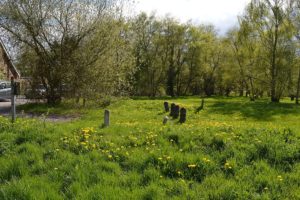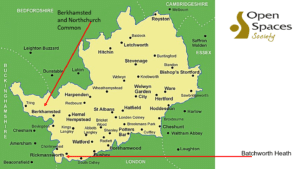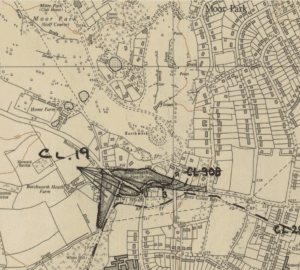Support us from £3/month
We deal with almost 1000 cases a year assisting communities, groups and individuals in protecting their local spaces and paths in all parts of England and Wales. Can you help us by joining as a member?
Our commons re-registration officer, Dr Frances Kerner, is researching lost commons which are eligible for registration as common land under part 1 of the Commons Act 2006. At the recent AGM, Frances gave a talk about the work involved to make an application to re-register ‘lost’ commons.

Batchworth Heath image Wikipedia
The re-registration of common land comprises three strands of research. First, the circumstances of a common’s provisional registration under the Commons Registration Act 1965 must be checked. This is to determine whether the reason for refusing to confirm the provisional registration meets the criteria as set out in Schedule 2 to the Commons Act 2006. In my work in Lancashire and Hertfordshire, the vast majority of commons that were not finally registered meet these criteria.

Project location for common land research
Having established that the common is eligible for re-registration, the second part of my work is to undertake historical research to determine whether the land was formerly waste land of the manor. With a good number of historical sources on-line it is possible to cover some of this research at a desk. Eventually however, there will be a need to attend at least one of the three main places where manorial documents are held (some are held privately or in other repositories). These places are The National Archives (TNA), The British Library (BL) and the record office serving a county. Since starting in January, I have visited TNA, the BL, Preston Archives and Hertfordshire Archives and Local Studies. Where manorial documents survive, they provide the best evidence in support of an application. Where they don’t, other sources have to be searched. Copies of relevant documents are made because these are submitted as evidence when an application for re-registration is made.
The third and final part of the research is to check that the land has the physical characteristics of waste land. This means that I have to visit the common to check that the land meets the criteria. This can take a few hours and includes taking photographs of the site for the application. The land must be ‘open, uncultivated and unoccupied’. These words all have specific meanings but essentially the land must not be enclosed by fences/walls, it must not show evidence of cultivation, or be occupied to the exclusion of others. In practice, determining whether the character of the land meets these criteria is not always as straightforward as it might seem and necessitates careful attention and discussion with colleagues

Copy of register map for Batchworth Heath. Image kindly supplied by Natural England
I am working on several different commons in Lancashire and Hertfordshire, all of which are at various stages of research. In Hertfordshire an application to re-register land at Batchworth will be submitted imminently and we are also liaising with the National Trust regarding the re-registration of common land on the Ashridge estate.
If you found Frances’ report interesting here are some or our popular common land resources
